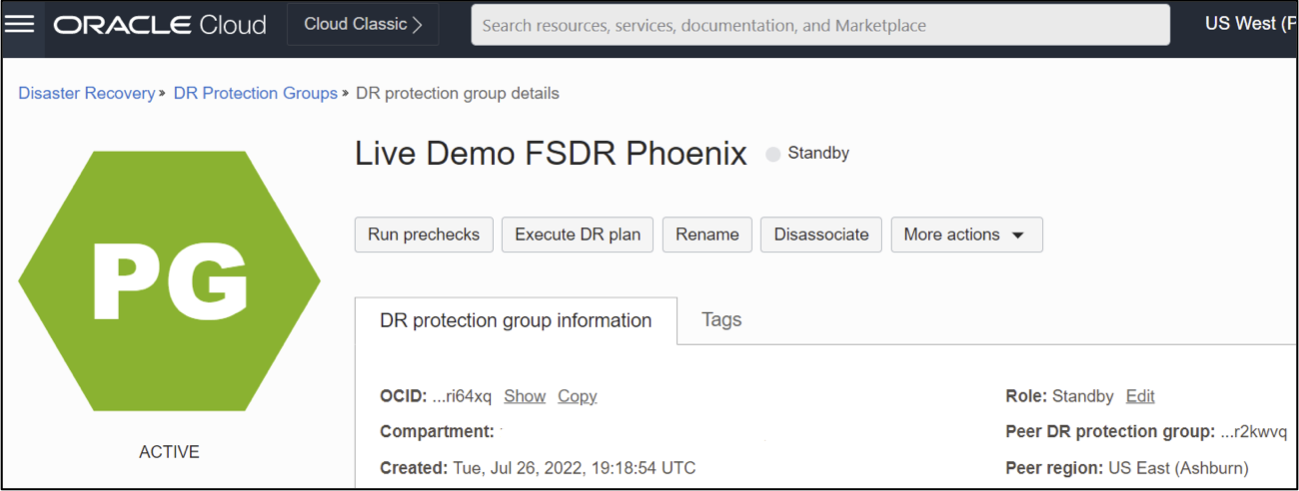Oracle Cloud Infrastructure (OCI) Full Stack Disaster Recovery orchestrates the transition of compute, database, and applications between OCI regions from around the globe with a single click. Customers can automate the steps needed to recover one or more business systems without redesigning or re-architecting existing infrastructure, databases, or applications and without needing specialized management or conversion servers.
Deloitte Consulting was one of our Full Stack DR early adopters. Deloitte uses Full Stack DR to automate disaster recovery of a highly critical internal application that runs in OCI. Full Stack DR replaced Deloitte’s existing manual rebuild DR strategy with an automated, much easier to maintain solution. In this blog post, Tucker Thompson from Deloitte has shared the features and benefits of using Full Stack DR.
A New Era in Availability
As organizations shift their workloads to the cloud, there is an innate breath of relief exhaled with the tossing asunder of traditional DR woes. With your processing no longer residing in a physical building attached to paperwork bearing your signature, gone is the fear of the 4 AM phone call about a fire, flood, tornado, busted HVAC, or a particularly sleep-deprived technician confusing rack location CX14 for XC14 and pulling the wrong cable during a peak workload.
While cloud technology is built on compounding layers of protective redundancies, Murphy’s Law and entropy tell us the worst can always still happen. That is why Oracle has gone beyond the robust layers of Availability Domains, Fault Domains, and general Maximum Availability Architecture to protect your cloud investment across Regional Layers.
With Full Stack DR, Oracle puts the power in clients hands to protect themselves from the worst of catastrophes. As the name implies, Full Stack DR provides a simple mechanism to protect and shift your entire stack from one physical region to another in a matter of minutes. This includes your compute instances, databases, block volumes, object storage, and more.
With Full Stack DR come compelling features that apply to Disaster Recovery and potential use-cases for other value-add functionalities. Here are some of our favorites in integrating Full Stack DR into our internal processes.

Built-In Database Integration
Full Stack DR integrates directly with pre-existing and well-established Database DR Technologies. For example, Full Stack DR utilizes Data Guard under the hood to automatically perform switchover and failover operations for a primary/standby pair, even across regions. Full Stack DR allows you to manage and monitor these operations in parallel for every single database in your region from a single screen.
Run Command Plugin Integration
Full Stack DR allows you to use an OCI Compute run command plugin feature to run commands and scripts on compute instances as part of a Full Stack DR activity. In doing so, you can take manual and time-consuming tasks that are part of a DR plan and automate them directly into your Full Stack DR plan.
Movable Compute Instances
One of the most powerful concepts of Full Stack DR is it allows you to freely move compute instances across regions or availability domains. With minimal preparation work and without having to maintain a passive copy of the instance, compute instances can be moved at the click of a button. Full Stack DR also allows you to run commands on these instances before and after the move, opening an even more extensive list of automation possibilities.
Non-Movable Compute Instances
Who said you have to use Full Stack DR only for disasters? As part of a Full Stack DR plan, you can also have compute instances that remain in the primary region throughout the Full Stack DR activity. While this may seem counter-intuitive, you may have existing infrastructure that is region-specific and only used in certain circumstances. You can also use the run command plugin on these compute instances to run commands in different regions at different parts of the Full Stack DR activity. For example, you can start applications in the primary region VMs and stop applications in the secondary region VMs. This enables Full Stack DR to be used for active/passive DR scenarios.
OCI Function integration
Last but by no means least, another one of our favorite features of Full Stack DR is its built-in integration with OCI Functions.Full Stack DR allows you to run a function in any region at any step of a Full Stack DR plan. By writing python code that integrates with OCI controls, you can tap into nearly limitless possibilities for controlling your cloud environment. If a niche feature or functionality is not built into Full Stack DR by default, you can achieve your needs by integrating through an OCI Function.
Where Will the Possiblities Take You?
In the solution, our team applied Full Stack DR; we could take a highly critical internal application and ensure it was protected across regions. We previously did not have as robust of a DR plan, and losing the resources tied to a region would be detrimental to business operations. Our application involved various OCI components, including password vaults, compute instances, block storage, and MySQL database. By utilizing Full Stack DR, we could easily protect all of these resources that previously could only run from a specific OCI region and ensure these critical resources could be moved across regions at a moment’s notice.
As your organization looks at integrating Full Stack DR into your business model, think beyond the traditional Disaster Recovery scenarios. Protect yourself from the worst and open yourself to the possibilities by utilizing a centralized, region-independent cloud management engine. A true cloud isn’t tied to the ground; make sure your cloud resources can indeed operate from anywhere in the world.
Learn more or get hands on with service
Full Stack Disaster Recovery OCI Full Stack Disaster Recovery
Full Stack Disaster Recovery Documentation
Full Stack Disaster Recovery LiveLabs

